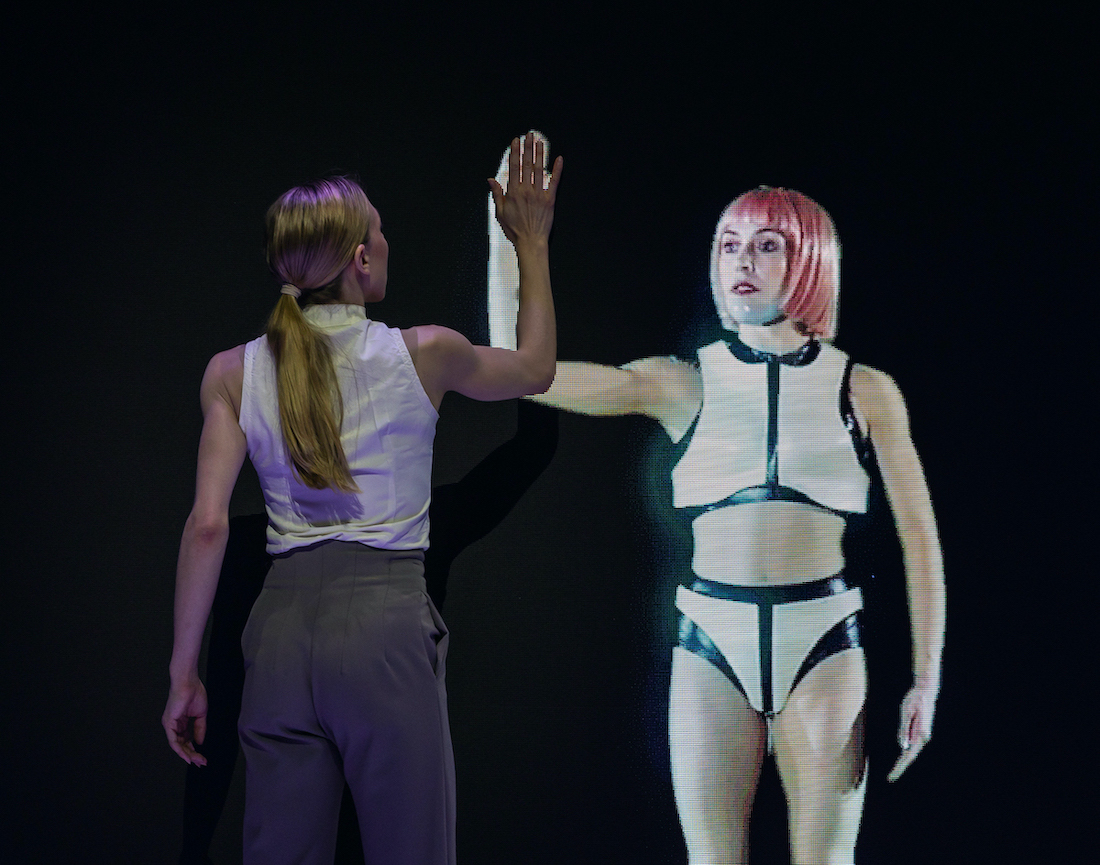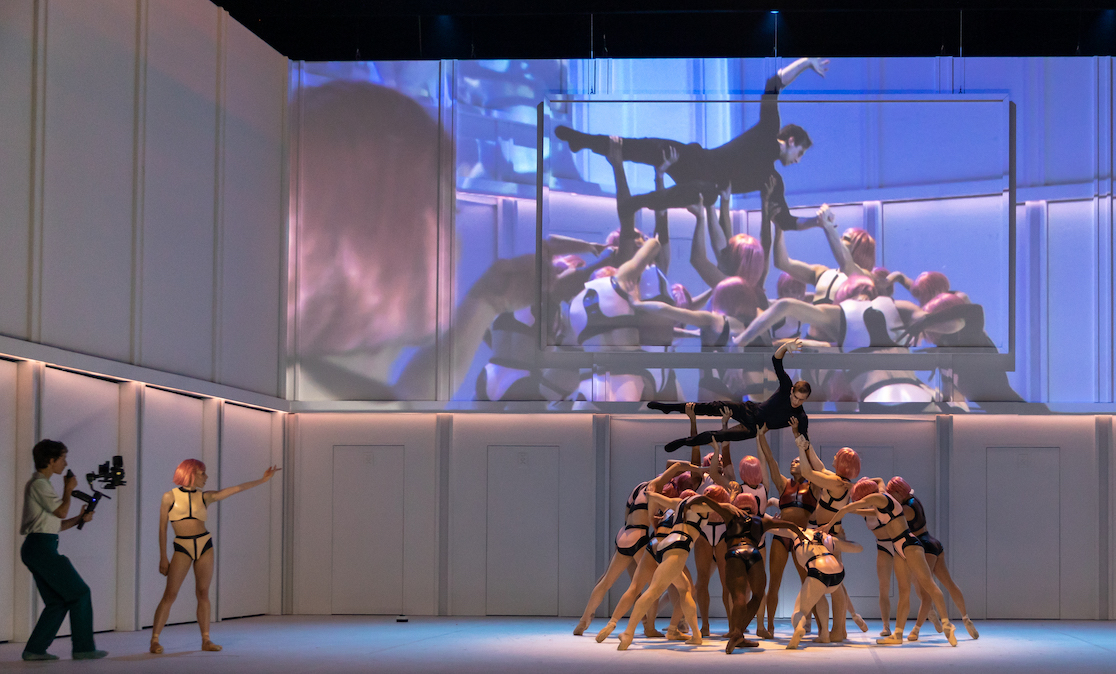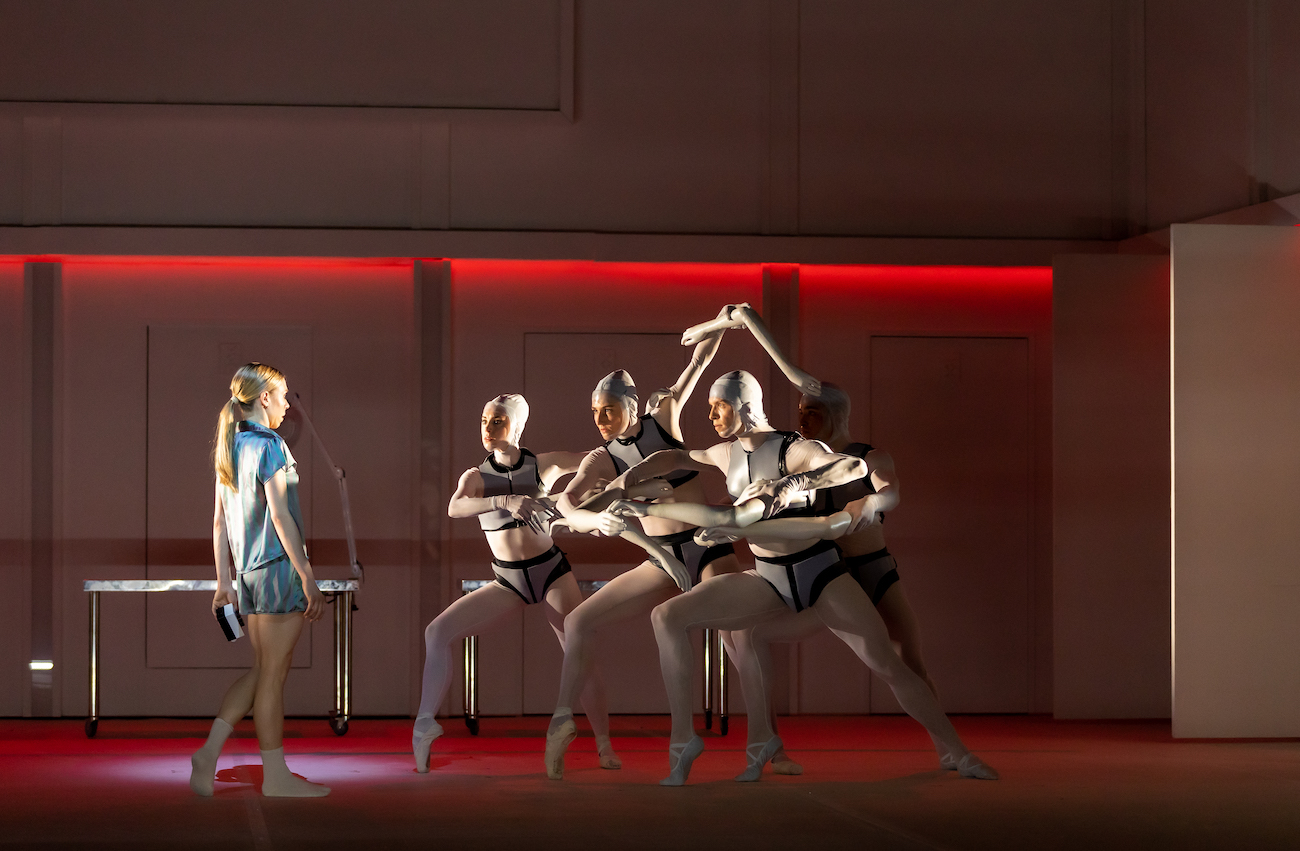COPPÉLIA ★★★★★

Many adaptations of classics do so with the aim of updating their themes. That’s not necessary with Coppélia which has always been about the horrors and amusement of fiddling around with artificial life. In the early 19th century, they had mechanical automata; these days we have sex robots and social media.
Scottish Ballet’s bang-up-to-date production is choreographed by the team Jess & Morgs (Jessica Wright and Morgann Runacre-Temple) whose background is in dance film. This is their third collaboration with the company, and by far their most ambitious, mixing live dance, live capture and recorded action, all seamlessly interwoven and thoughtfully integrated.
In this version, Swanhilda (Constance Devernay-Laurence) is a journalist, sent to interview megalomaniac Silicon Valley mogul, Dr Coppelius, in the head offices of his company NuLife (no prizes for guessing Coppelius’ inspiration, when he appears in a black polo neck). Bruno Micchiardi brings an enigmatic presence to the role, all Svengali-like as he commands his army of scientists and workers and comical as he completes his workout while going through a business meeting.

Principal Constance Devernay-Laurence in world premiere of Scottish Ballet's Coppélia / Picture: Andy Ross
Coppelius has created some AI software of which he is extremely proud, a doll called Coppélia that can be 3D-printed into life. And here is where Jess & Morgs begin to show us what they do best with their movement language. The uncanny creepiness of the human dolls (and there are many of them, not just one Coppélia) is skin-crawling, yet so magnetic you cannot look away. By some trick of Bengt Gomér’s lighting they appear rubbery and pliable. When carried across the stage, the original Coppélia has just enough wobble in her limbs to show her suppleness, and yet she seems definitively dead inside.
Later, Swanhilda ventures out in the middle of the night to sneak into NuLife’s laboratory, and witnesses a mesmerising danse macabre of its doll ensemble. They hold extra limbs that look almost like prehistoric bones, forming odd skeletal shapes; and these robots seem gentle, curious and alluring. This is cleverly juxtaposed shortly afterwards with an office party at NuLife, where the human office workers thrust and jerk in a mechanical Macarena-like formation: who is more sentient and tender now?

Soloist Bruno Micchiardi and Scottish Ballet dancers / Picture: Andy Ross
A huge part of this Coppélia’s brilliance comes from the new score, composed by Mikael Karlsson and Michael P Atkinson with echoes of Delibes’ 1870 original. The Scottish Ballet orchestra is fired up with drama and danger, conducted by Jean-Claude Picard, and that other famous Californian neighbourhood (Hollywood) bleeds through the music, just one more layer of fictional/real head-wreck that this production serves us. There’s noirish mischief, sweeping passages reminiscent of space-travel films, and murmuring underwater mystery.
At Coppélia’s climax, when Swanhilda embeds herself in the AI, seizing its power with her humanity, the music rises to the swagger of her Fosse-like movements, a passion and a flair that shows us exactly what humans can do that robots cannot: dance from the heart. ‘Women like that don’t exist,’ comes the voiceover from Coppelius. Actually they do, Swanhilda tells us. You just have to believe in them.
Of course, this weaving of technology and movement is another of the stars, and it immediately becomes clear how integral Jess & Morgs’ dance-film vision is to the piece. Digital projections can sometimes seem gimmicky and distracting against dance, but here Will Duke’s creations are not only essential for the storyline, but adapt their visuals to each situation to produce different (usually disturbing) effects.

Principals Constance Devernay-Laurence, Bethany Kingsley-Garner and Marge Hendrick, Artist Harvey Littlefield and Soloist Javier Andreu / Picture: Andy Ross
When Swanhilda takes a peek behind the curtain at NuLife’s laboratories, the sweep of creepy things we are presented with (plastic limbs, human torsos spread across tables, a snake in a jar) has a deep-dive David Lynch feel to it. Later we’re in voyeuristic territory as we watch through a CCTV camera as (in real time) Swanhilda goes through her bedtime routine. For much of the ballet, dancer Rimbaud Patron tracks the action with a Steadicam, projecting huge captures of the dancers’ faces onto the backscreen, giving us a kind of intrusive over-close glimpse into a person’s soul that only a digital camera can bring.
It's a blistering, glossy blockbuster of a horror-ballet, and ultimately, Dr Coppelius’ chilling question is one we might all want to stop and consider: ‘do you derive more pleasure from running your finger over your lover’s skin, or across the glass surface of a phone?’
Festival Theatre, 15 & 16 August, 7.30pm (plus 16 August, 2.30pm); autumn tour dates at scottishballet.co.uk/event/coppelia.